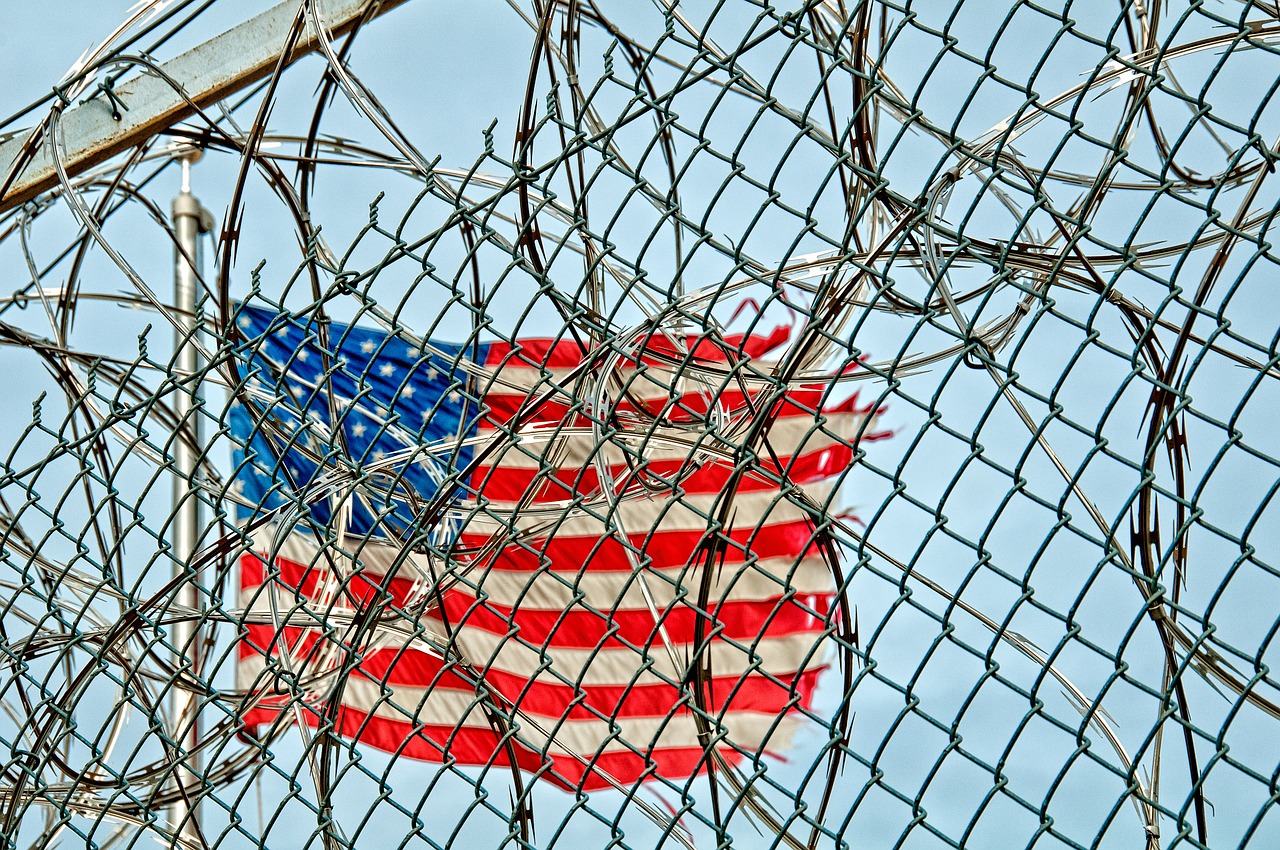Census data show incarceration rates are down. It may have more to do with the pandemic than broad reforms.
Originally published in The Marshall Project on 9-02-2021
There Are Fewer People Behind Bars Now Than 10 Years Ago. Will It Last?
Census data show incarceration rates are down. It may have more to do with the pandemic than broad reforms.
Nearly two million adults were incarcerated across the country, according to the 2020 Decennial Census. The latest figures show a 13% drop in the total number of incarcerated people, or nearly 300,000 fewer people, compared with the 2010 Census.
Roughly one-third of the drop in total numbers occurred in just two populous states — California and New York. In total, 41 states, the District of Columbia and Puerto Rico saw reductions in the total number of incarcerated people.
In five states, the number of incarcerated people actually increased compared with a decade ago, but the incarceration rate still shrank because their total population grew more quickly than the prison population. Just four states — West Virginia, Alaska, Nebraska and Arkansas — saw their incarceration rate increase.
Incarceration in your communityLook up how many people are incarcerated in your state and county according to the U.S. Census.
Counting incarcerated people during a pandemicThe Decennial Census offers a comprehensive and geographically granular look at the U.S. population by attempting to collect information about where everyone lives as of April 1. By definition though, it is a snapshot of a brief moment in time, which is a limitation in trying to capture fluctuating numbers.
If the Census was held later in the year, for example, it might have shown a more substantial drop. The Marshall Project’s COVID-19 tracker showed state and federal prisons had 100,000 fewer prisoners in June 2020 than in April, when the census was taken. Another study estimated that from mid-year 2019 to mid-year 2020, county jails nationwide had 185,000 fewer people.
Experts say that a combination of factors contributed to this decrease: The court system and parole offices slowed down as they moved operations online, which has reduced the number of people who were sentenced or caught up in parole violations. In many jurisdictions, police departments also cut back on proactive tactics, such as traffic stops, and the number of drug crimes dropped significantly. Some prison and jail officials also rushed to empty out facilities to prevent COVID-19 outbreaks.
Broadly, these numbers have already started to tick back up as criminal courts begin to reopen and the criminal justice system is returning to normal, according to a recent report from the Vera Institute of Justice. Given how unstable incarceration rates have been since the start of the pandemic — which overlapped with the entire period of census data collection — it may be impossible to draw any long-term conclusions from the apparent drop seen in Census data.
Prison gerrymanderingThe most consequential function of the census — in fact, the reason the constitution mandates a census every ten years — is to divide state populations into roughly equal legislative districts. This has profound ramifications for incarcerated people because in most states, they are counted in the places where they are held, not in the communities where they are from.
The practice, dubbed “prison gerrymandering,” dilutes the political power of urbanized areas — where many incarcerated people come from — and adds to the political power of rural areas where prisons, jails and detention centers are often located.
Since incarcerated people in the vast majority of states are denied the right to vote, these rural areas gain political representation from incarcerated people who are virtually excluded from civic life.
Confusingly, even those incarcerated people who can vote in Maine and Vermont, do so with an absentee ballot from their pre-incarceration precinct, despite being counted as residents of wherever they are incarcerated at the time of the Decennial Census.
Twelve states ended the practice before drawing up new districts in 2021, and will count incarcerated people in their home district moving forward.
Incarceration in Most States Stayed Relatively FlatIn most states, the raw numbers of incarcerated people didn’t change much, despite widespread efforts to decarcerate prisons and jails during the COVID-19 pandemic.
Instead, a few populous states lost a larger share. For example, California’s incarcerated population shrunk by 50,000, and New York’s by 30,000. Together, they account for approximately one-third of the national decrease in incarcerated population, while representing less than one-fifth of the country’s population. Nine states saw an increase in the incarcerated population.
The incarceration rate provides another perspective. Many southern states with slightly higher incarcerated populations also saw the fastest population increase in the past ten years. Because the number of people in these states grew faster than the number of incarcerated people, their incarceration rates still went down.
After taking changes in the general population into consideration, four states — West Virginia, Alaska, Nebraska and Arkansas — are the only ones with a higher incarceration rate than in 2010. West Virginia had the largest change, with 3,000 more incarcerated people.
One key reason West Virginia trended in such a different direction than the rest of the nation: population loss. The state lost 3.2% of its population between 2010 and 2020, dramatically more than anywhere else in the country. The next most depopulated state was Mississippi, which only lost 0.2%.
Also contributing to West Virginia’s growth are the increasing number of people who are waiting in regional jails for their trials, according to Quenton King, a criminal justice policy analyst at the West Virginia Center for Budget and Policy.
King’s research shows that from fiscal year 2010 to 2019, West Virginia’s jail population grew by almost 30%, leaving the jails over their maximum capacity. Moreover, it became increasingly difficult for counties to pay for incarceration, King said.
“We used to have county jails, but counties couldn’t afford them,” King said. “So now we have regional jails, where about seven counties share one, but even then counties have difficulty paying their share.”
Ultimately, the reasons prison populations remain stubborn in West Virginia are similar to the reasons they were mostly flat across the country. “We have local elected leaders, prosecutors and magistrates who still fall into this old school mindset of incarceration being the way to fix social ills,” said Eli Baumwell, The Advocacy Director for the ACLU of West Virginia. “Until that changes, unfortunately I think the state is going to keep seeing these numbers climb up.”


